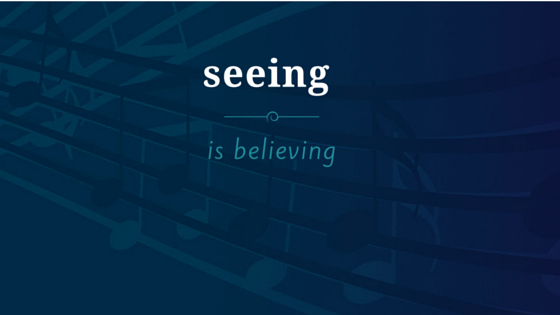Blog

10
Jan
Seeing is Believing
by
Lyn Koenning
on January 10, 2016
0
comments
Imagine what a game changer it would be if you could boost your confidence level and performance ability at auditions simply by visualizing yourself succeeding. Some might call this daydreaming, but brain researchers have learned that “visioning”—actively imagining something you really desire—is a little bit like yoga for your brain cells. Visioning is a chance for your mind to focus on the experiences you would like to have, creating the mental space and emotional energy to make those experiences reality.

But visioning is more than merely fantasizing about landing your dream role or getting into your top choice of colleges. It’s a mental workout that develops your awareness of outcomes that are entirely possible.
Here’s the science behind how it works:
- Your brain develops thought patterns that feel comfortable and familiar based on what you routinely think about. The more you think about something and use that part of the brain in a focused way, the more these patterns develop. According to researchers, the brain doesn’t distinguish between imagined, viewed and actual experiences. By regularly visualizing a positive experience, your brain can help you in real life.
- Steven Ungerleider, PhD, leading sports psychologist and author of Mental Training for Peak Performance: Top Athletes Reveal the Mind Exercises They Use to Excel (Rodale Press, 2005), calls the process “mental blueprinting.” He says it works well for athletes because it helps develop the appropriate motor programs in their nervous systems. “Rehearsal of the sequence of movements involved in a task allows us to learn them symbolically,” he writes. “We then apply them when we go out on the field of competition.
- One reason mental practice may be effective, Ungerleider explains, is “because it produces very small muscle contractions similar to those involved in physical practice. Images produced in the mind transmit electrical impulses to our muscles and tendons for the performance of an athletic exercise or event.”
“I’m not an athlete; I’m an artist! How can visioning help me?”
- Since athletic endeavors aren’t the only ones that rely on solid neurological networks, blueprinting can create a mental path for other experiences, like giving a great audition or nailing a performance in front of an audience. Your brain will recall the “future memory” you created, and as a result you will react much more comfortably and confidently, both physically and mentally, in real time.
- Visioning is like mentally rehearsing your desired outcome until it feels natural, achievable and almost inevitable. That’s good news for actors, because we already know how to rehearse for a role! Decide how you would like to be able to do something and then imagine yourself walking through it one detailed step at a time.
- Try it: Create a vision board using words and images that inspire you. If it’s digital, you can make it your computer or device’s wallpaper. If it’s mixed media, find a place to hang it where you’ll see it often. You can even save a photo of it on your device and carry your visual inspiration with you wherever you go!
Visioning can trigger positive feelings and reactions generated by your past “success” (the great audition or performance you visualized) instead of panic or paralysis when you are about to experience the actual event. And then there you are, enjoying a new kind of moment – the kind you thought you could only dream about.
What’s your vision for 2016? Share your thoughts in the comments below or, better yet, share an image of your vision board on the AuditionCutPro Facebook page!
